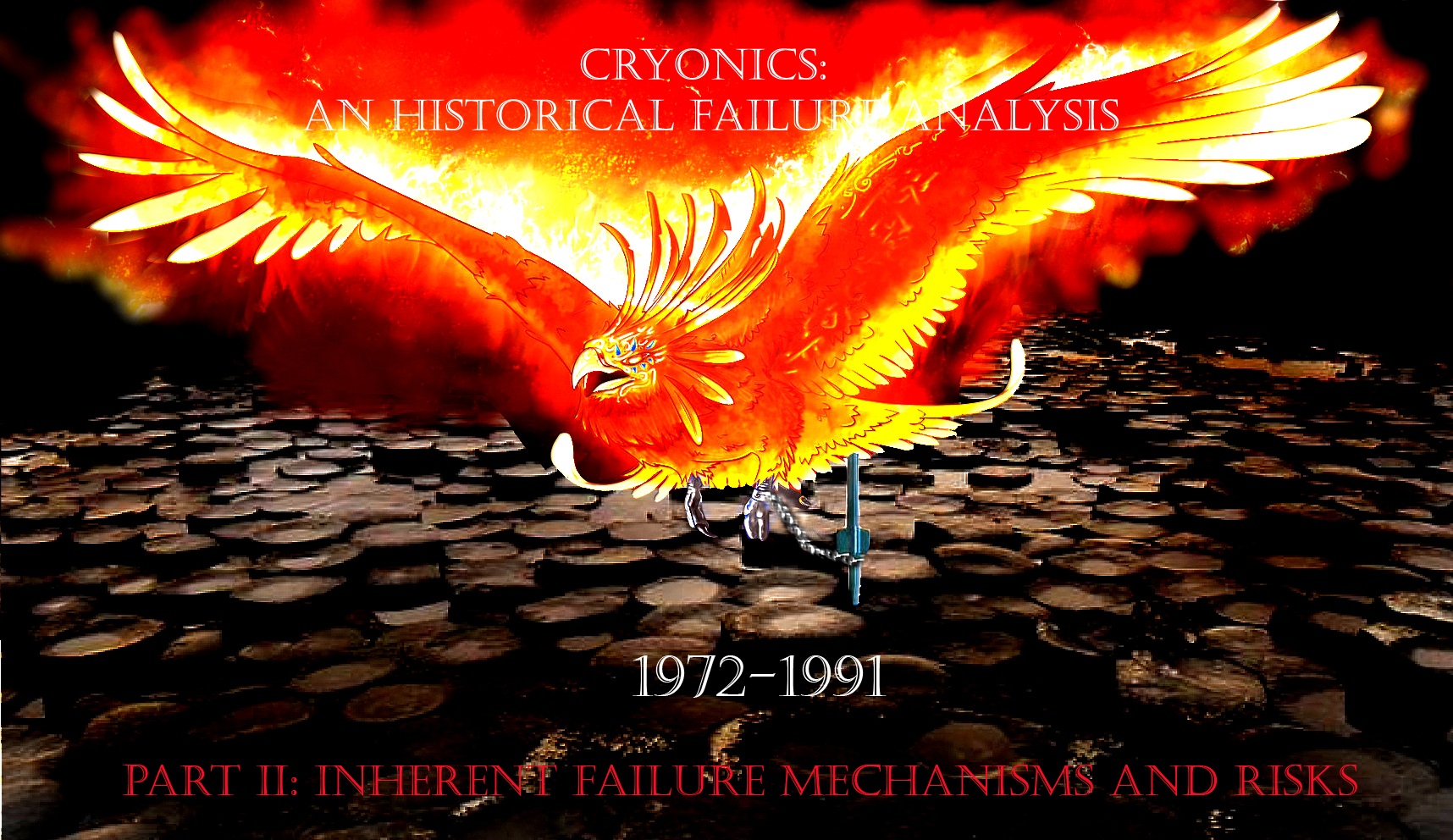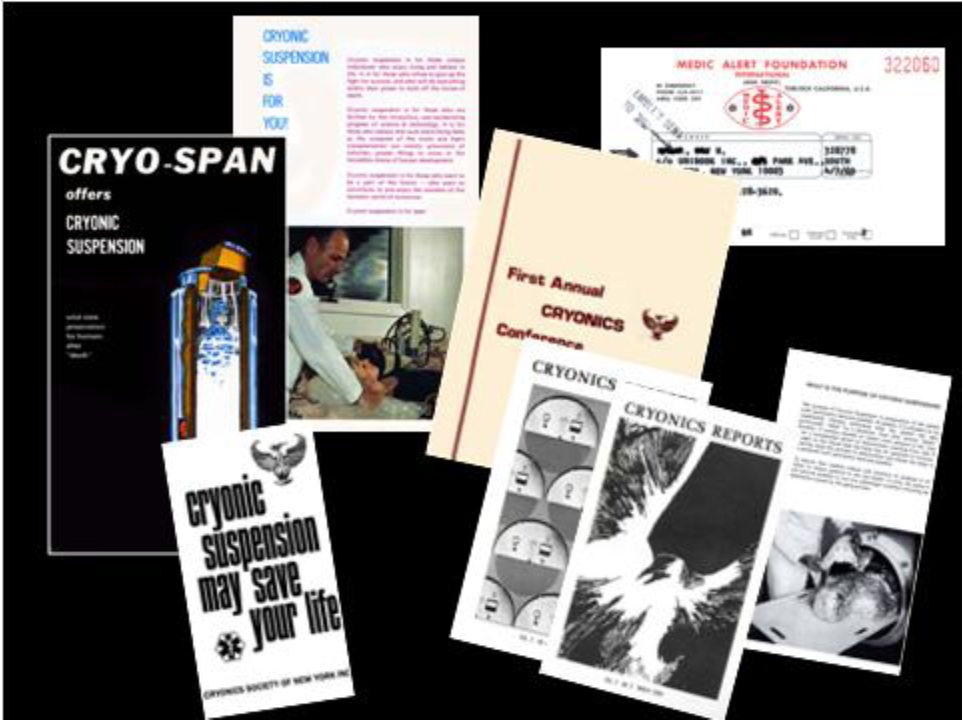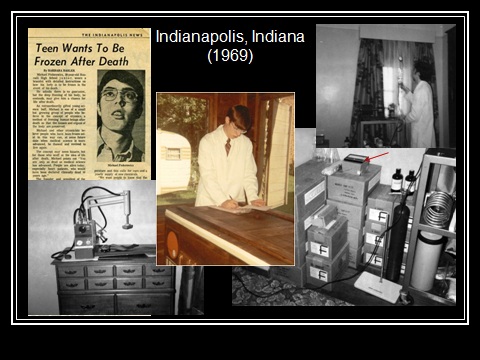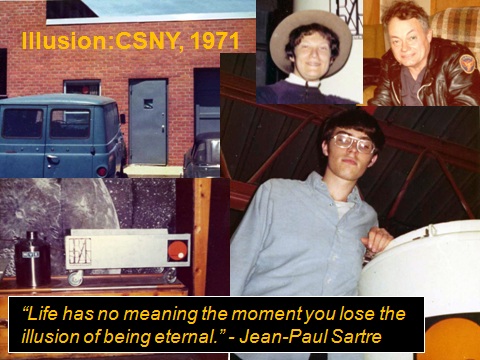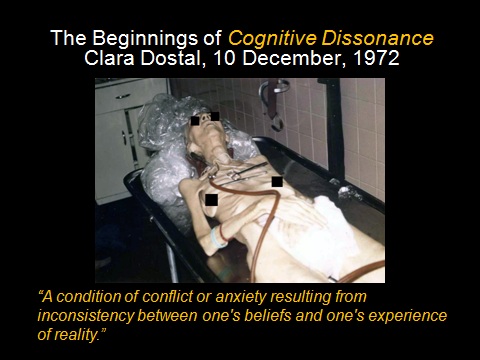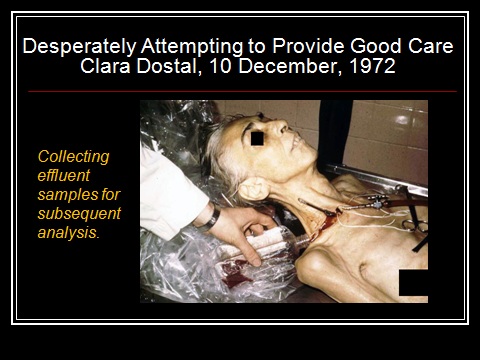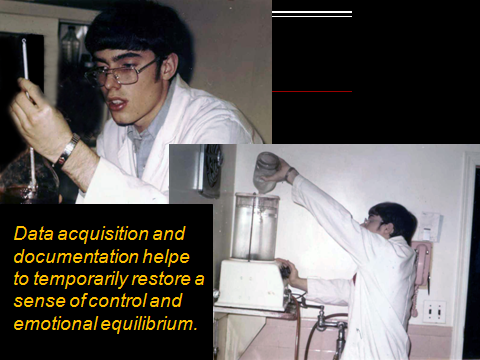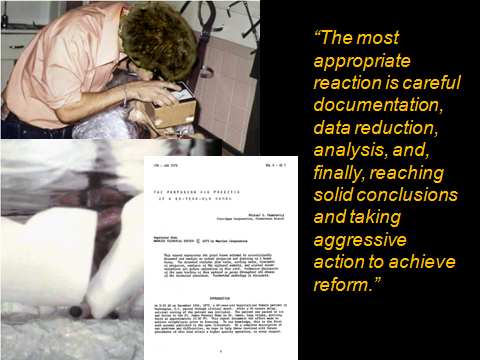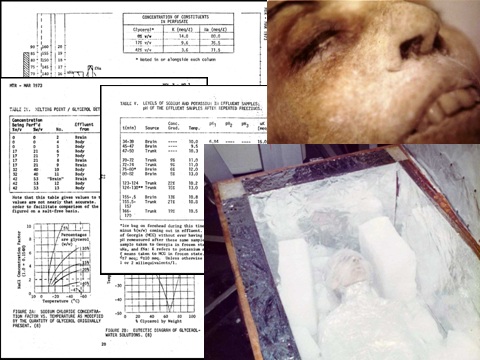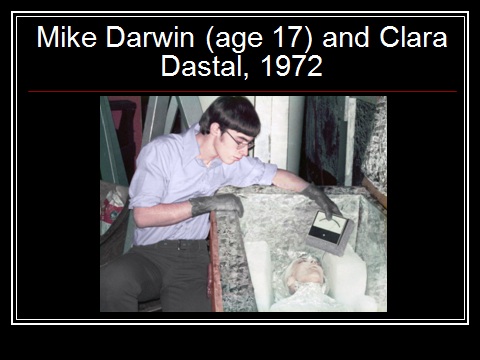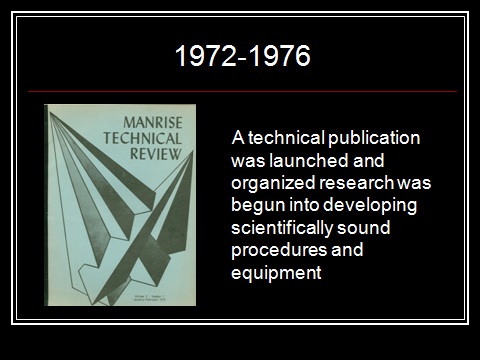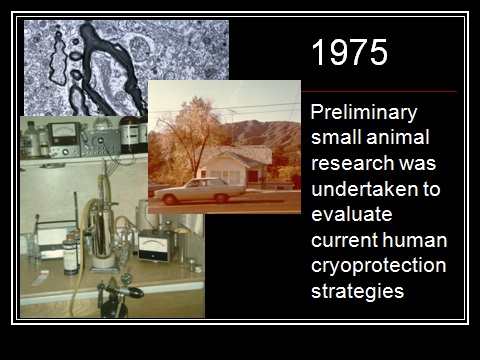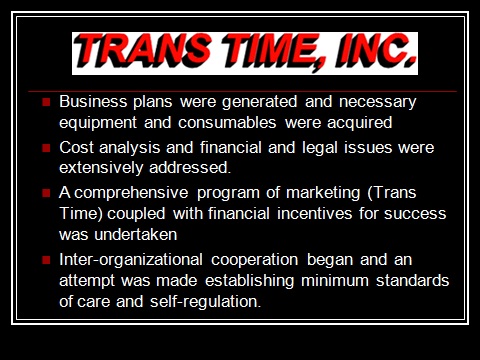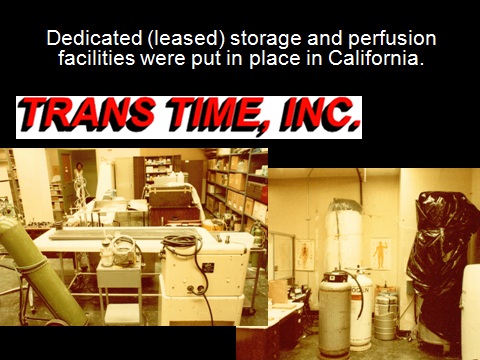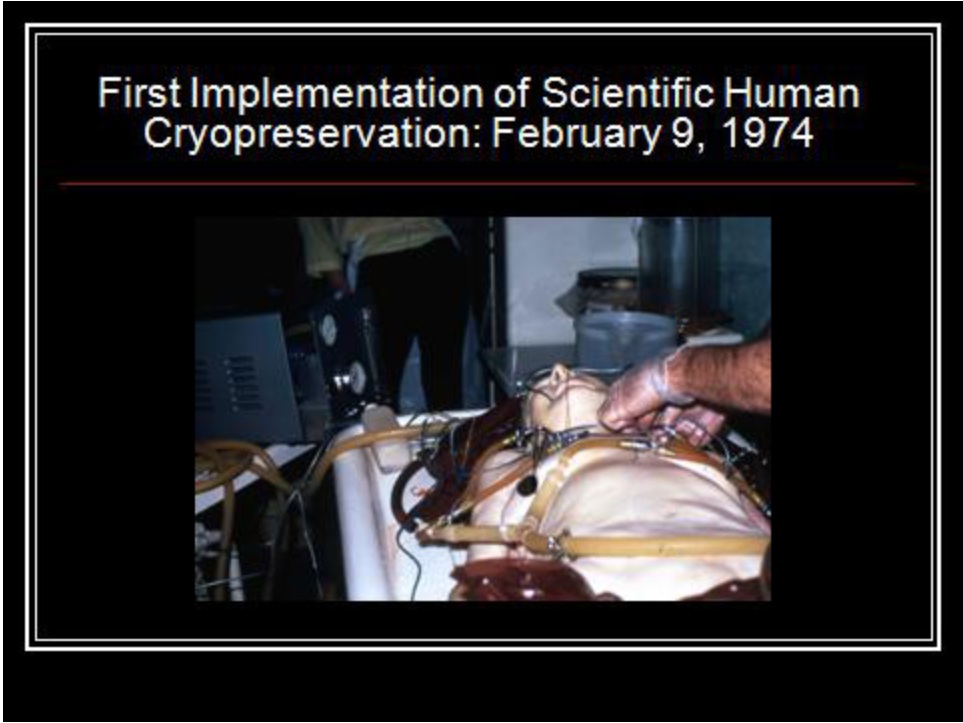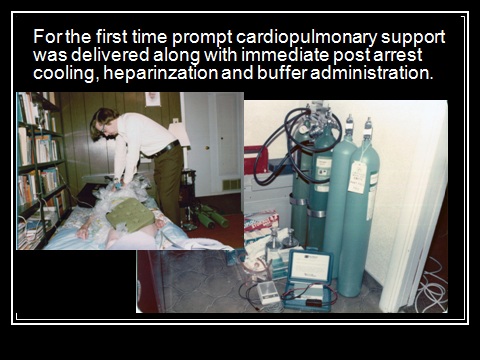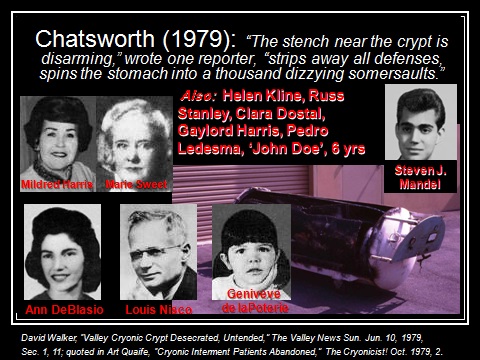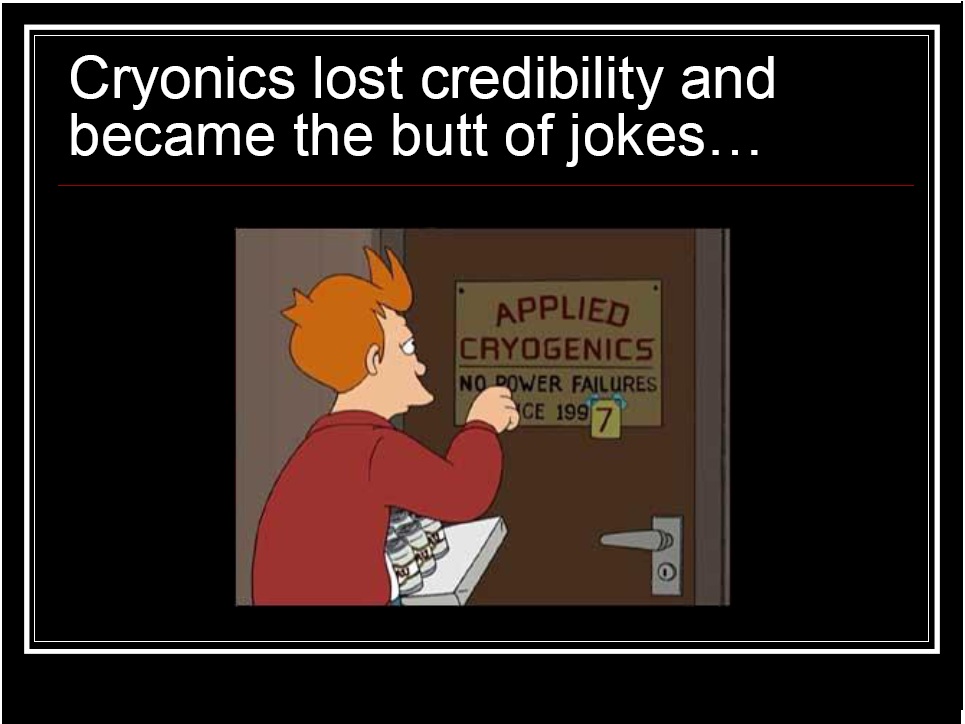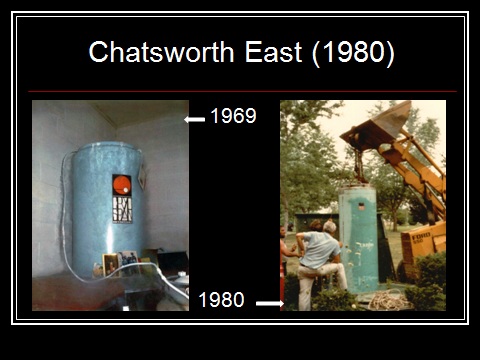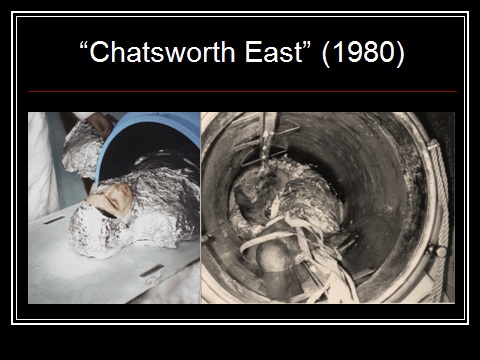1972-1991
AWAKENING TO REALITY
As I said in the previous lecture, the literature produced by CSNY created an impression of competence and of the presence of a solid organization.
After I had been involved in cryonics for a little over a year I began to hear rumors that CSNY was not being run honestly and that, in particular, the patients were not being
stored submerged in liquid nitrogen and that their heads and upper bodies were well above dry ice temperature.
There were other rumors and accusations as well. The source of these turned out to be Robert Nelson, and after a great deal of difficulty I managed to speak with him by phone.
GOOD ADVICE
Nelson.s charges prompted me to call Curtis Henderson and to confront. him with Nelson’s accusations. Henderson.s response was simply to invite me to come and see for myself. He explained that it was impossible to answer accusations of the kind Nelson was
making in any meaningful way short of seeing first-hand what conditions were and spending time with the people to whom I had entrusted my life. I was 14 years old at that
time and I doubt very much if Curtis expected me to take him up on his offer – even though it was clearly sincere.
However, that is exactly what I did. I took a part time job to pay for my plane ticket and I showed up on CSNY’s doorstep the summer after that phone call.
The image of solidity and professionalism projected by CSNY.s literature was tempered substantially by my having visited CSNY during the summers of my 14th and 15th years (yes, I went back). I was well aware that the storage facility was small and that the resources of the organization were minimal. For that reason, and because of the geographical distance, I began to accumulate the equipment and supplies required to carry out cryoprotective perfusion and cooling to dry ice temperature. I also began efforts to recruit others into cryonics.
By late 1971 I had acquired all the equipment and chemicals I believed were needed to carry out the pre-liquid nitrogen phases of cryopreservation. One of the most costly items, and one which I had to purchase new, was a thermocouple thermometer, pictured sitting atop cases of Ringer.s solution and indicated by a red arrow.
By 1972 the war of words between CSC and CSNY had reached fever pitch. One of the charges being made by CSC was that Curtis Henderson was storing patients improperly and that their heads and upper bodies were, in fact, well above dry ice temperature most of the time.
In December of 1972, Corey Noble and I journeyed from my home in Indianapolis. Indiana to visit CSNY and actually measure the temperature at the top of the MVE dewars, as well as at various points on the patient then in storage and so the TC meter in this picture was taken along on the trip.
Note the character and quantity of the equipment and supplies I had accumulated in Indianapolis: at left the Westinghouse Iron Heart; center, a dry ice box; upper right,
roller and centrifugal pumps; lower right, Ringer.s solution, DMSO, stainless steel heat exchanger, bubble trap, formaldehyde for sterilizing the perfusion circuit, perfusion
circuit, pH paper, liquid measuring equipment…
The morning after Corey and I had arrived at the CSNY facility, we were awakened by Saul Kent, who informed us that a CSNY member, a woman named Clara Dostal, had just been pronounced legally dead and that, since we were “experts” in the area of cryoprotection and perfusion, we should take charge of the case and perfuse the patient. This was the beginning of a period of agonizing cognitive dissonance for me (I cannot speak for Corey Noble).
Prior to this, perfusion and cool down as practiced by CSNY had been a black box to both Corey and me. We assumed that this procedure was carried out in a “scientific” manner and that the CSNY mortician Fred Horn, working with their biologist Paul Segall, were implementing some kind of reasonably professional and standardized care – even if it was not very sophisticated. In this we were sadly mistaken. To my horror I discovered that not only was I better prepared to perfuse and freeze patients in Indianapolis, but CSNY neither owned nor had access to a graduated cylinder for measuring out the volume of
cryoprotective agent to be added to the Ringer.s carrier solution! We were forced to measure out the glycerol to be added to the Ringer.s carrier solution by using an empty
Ringer.s solution bottle. The approximate liquid volumes molded into the glass of these IV bottles had to serve in place of an accurate measuring cylinder.
SLIDE 101
Even more surprisingly, we discovered that CSNY had no way of measuring temperature. The only thermometers at our disposal were the ones we had brought with us. There was no established protocol, no dedicated equipment, no data collection and no monitoring or observation of the patient at all. I was appalled and deeply shaken. For the first time I realized on both an emotional and intellectual level that cryonics had truly failed. Certainly, in the form I found it, it had no chance of success.
Corey and I did what we could. We carefully measured every parameter it was possible for us to measure on site, such as patient and perfusate temperature, perfusate glycerol concentration, arterial flow rate, patient cooling rate, and so on. We also collected effluent samples from the patient and divided them such that one set would remain with the patient (bottles seen at lower left in the next slide) and the other set would be taken back with us for physical and biochemical analysis (CPA concentration, pH, electrolytes, tissue specific enzymes, etc.).
The TC thermometer we had brought with us from Indianapolis proved essential for monitoring the patient’s internal temperature during perfusion as well as her temperature as she cooled to dry ice temperature. The objective was to thoroughly document her care and make recommendations for changes in the future. We both felt strongly that future patients should benefit from the knowledge and experience gained from this (and every)
case.
The paper we produced appeared in the March, 1973 issue of Manrise Technical Review, a publication produced by Alcor.s brother for-profit organization, Manrise Corporation, which was edited by Fred and Linda Chamberlain.
My experience perfusing and freezing Clara Dostal left me deeply anxious and profoundly dispirited. It took several weeks before anger replaced fear, and a relentless commitment to rapidly improve conditions replaced a near total paralysis of will. In no small measure this experience led to me seek out others who shared my vision of cryonics as a competent, well run undertaking based on a scientific and medical model in the context of good business practices.
CRYONICS’ SECOND ERA: 1972-1981
This led me to connect with Fred and Linda Chamberlain in Southern California. Following my trips to CSNY, I set out, again with Greg Fahy, to try to determine
the state of cryonics on the West Coast. What we found there, or more precisely what we didn’t find, was even more disturbing than what we had seen and experienced at CSNY. While Corey did not share my opinion, let alone my conviction, the trip to Southern California had convinced me that CSC’s patients had been badly mishandled and that
in all likelihood they had been thawed out and buried or cremated. This conviction was shared by Fred and Linda, with whom I formed strong and immediate bonds.
Fred and Linda, like me, had come to realize that cryonics was an abject failure and, with painful slowness, they had begun the process of creating facilities to provide for rescue, stabilization, perfusion and storage with two new organizations: the Alcor Life Extension Foundation, and Manrise Corporation.
We began to scour the scientific literature for information to allow for development of a rational cryobiological approach to care, and where possible experts in medicine and cryobiology were consulted. A technical publication was launched and organized research was begun into developing scientifically sound procedures and equipment – and to document them openly and in as much detail as possible.
THE BIRTH OF SCIENTIFIC CRYONICS
A modest research and patient cryopreservation facility was set up and preliminary small animal research was undertaken to evaluate then current human cryoprotection strategies.
Since we could not be assured of being able to afford permanent facilities long term, a decision was made to modularize capability and a mobile operating room was constructed using an old laundry van (lorry). Refinements were made to in-house fabricated perfusion and heat exchange equipment and testing of these systems was undertaken to establish reliability and gain familiarity with their operation. Business plans were generated and necessary equipment and consumables were acquired. Cost analysis and financial and legal issues were extensively addressed. A comprehensive program of marketing (Trans Time) coupled with financial incentives for success was undertaken. Inter-organizational cooperation began and an attempt was made establishing minimum standards of care and self-regulation.
At about the same time, a graduate student in mathematics who lived in the San Francisco Bay Area, Art Quaife, along with an electrical engineer (John Day) and several other interested cryonicists, including Paul Segall, who had relocated to the Bay Area, founded Trans Time, Inc. (TT). TT was similarly focused on “rebooting” cryonics as a proper scientific undertaking run on sound business principles. TT purchased the technological platform developed by Manrise Corporation for cryoprotective perfusion (including the Manrise perfusion machine, heat exchanger, and procedure manual) and focused primarily on producing the first truly comprehensive business analysis of cryonics. They also did much to clarify nettlesome financial and legal issues.
TT launched the first comprehensive program of marketing cryonics coupled with financial incentives for success, and they also aggressively marketed their stock to
educated investors within the cryonics community.
Dedicated (leased) storage and perfusion facilities were put in place in by TT in Northern California in 1974.
On 09 February, 1974 a decade after The Prospect of Immortality was published and seven years after Dr. Bedford was cryopreserved, Trans Time accepted its first two patients and the first human cryopreservation conducted under something approaching „controlled
conditions. took place. [The Dostal case technically qualifies but it was an ad hoc effort, not a planned undertaking.]
Despite two years of preparation there were many problems with both of these cases. As you can see in this photo, many practical details, such as how to position and anchor the perfusion tubing had not been worked out and improvised solutions were employed. Note the plastic embalming fluid bottle being used as a prop and the tubing connecting the arterial line to the patient being supported by a length of ligature twine.
Much more seriously, take a good look at the patient. This photo was taken at the end of CPA perfusion (decannulation is underway and some of the refrigerating ice has been removed). Unlike Mrs. Dostal, this patient has become markedly edematous as a consequence of CPA perfusion. This happened because what seemed best in a review of the literature did not work when applied clinically. In this case, a decision had been made to use DMSO instead of glycerol because of the former.s superior cellular permeability. Unfortunately, DMSO is quite toxic to the vascular endothelium and this effect is greatly
amplified in patients with prolonged ischemic injury. This patient received no cardiopulmonary support and had suffered well over 24 hours of cold ischemic injury.
The obvious (but unheeded) lesson was that techniques used on humans must first be evaluated in a suitable animal model under conditions as close to those that are encountered clinically as possible.
While the party line to the media had always been that patient stabilization was begun immediately upon pronouncement, it was not until Fred Chamberlain, Sr., arrested on 16 July, 1976, that this was actually done. The next such case, shown in this slide, took place under the auspices of Trans Time three years later in January of 1979. At the bottom center of the slide a blue plastic case with a small speaker next to it contains an electronic stethoscope with amplifier so that the patient could be monitored continuously and the moment of cardiac arrest determined with precision. This instrument was developed by Fred Chamberlain and me and was first used (successfully) on his father, Fred Jr.
At this point, cryonics as practiced by Alcor and Trans Time had become professionalized to the extent that there was control over and documentation of perfusion temperature, pressure, and flow. The volume of perfusate used was based upon complex mathematical modelling of CPA uptake and there was frequent and consistent measurement of the concentration of CPA in the venous effluent. Finally, in-house trained and skilled personnel were available in conjunction with an effective emergency response system (ERS).
Cooling to -79oC and -196oC were also documented and brought under some measure of control. Packing of patients in dry ice to achieve freezing was abandoned and an isopropanol bath was used in conjunction with the measured addition of dry ice in order to reduce the patient’s temperature in a controlled manner.
PAYING THE PIPER
Then, in 1979 the years of deceit and lies which had dogged cryonics from the start came to the fore. The nearly completely decomposed bodies of ten cryonics patients were discovered by an investigative reporter in the facilities of CSC in Oakwood Cemetery in Chatsworth, CA. As I have previously stated, the consequences of this scandal were devastating for cryonics. The story of the initial discovery and the subsequent civil trial that resulted remained an item in the national press well into the 1980s.
Cryonics became synonymous with “thawed bodies” and there were countless cartoons and gruesome humor pieces in magazines and newspapers. The loss of credibility and
the specter of failure resulting from Chatsworth extend into the humor, as well into the more serious criticism of cryonics today, as evidenced by this still from the animated
series Futurama. Futurama.s creator Matt Groening followed the Chatsworth scandal as a boy and some of his most successful cartoons early in his career satirized the Dora Kent debacle.
In 1980 the grotesque scene at Chatsworth was again played out, this time, mercifully, absent any media coverage. The victims were Ann DeBlasio and a woman from Beverly Hills, California, both of whom had been placed in an inadequate facility, absent any alarms or monitoring, in Mount Holiness Cemetery in Butler, New Jersey (NJ).
That facility was a duplicate of the one Nelson had constructed in Oakwood Cemetery in Chatsworth. And yes, Nelson, along with Nick DeBlasio, had built the Butler, NJ facility as well.
Eleven years after she had been cryopreserved at CSNY, this is what had become of Ann DeBlasio. After the expenditure of tens of thousands of 1970 dollars and countless hours of labor any chance these two women had of returning to life was gone.
So ended the second era in cryonics.
End of Inherent Failure Mechanisms and Risks, Part 1

